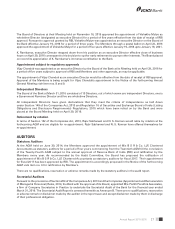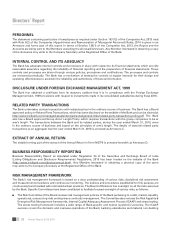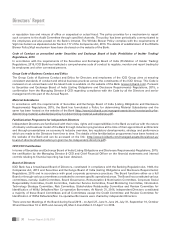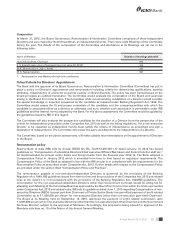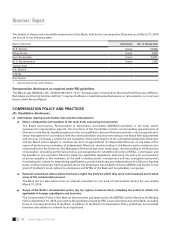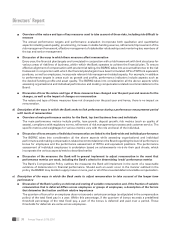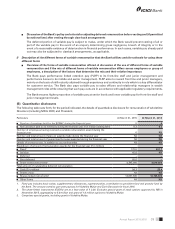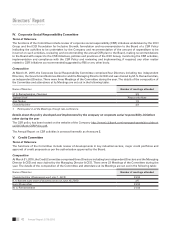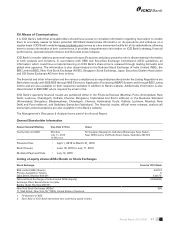ICICI Bank 2016 Annual Report Download - page 39
Download and view the complete annual report
Please find page 39 of the 2016 ICICI Bank annual report below. You can navigate through the pages in the report by either clicking on the pages listed below, or by using the keyword search tool below to find specific information within the annual report.
37Annual Report 2015-2016
Type of employees covered and number of such employees
All employees of the Bank are governed by the compensation policy. The total number of permanent employees
governed by the compensation policy of the Bank at March 31, 2016 was 72,175.
b) Information relating to the design and structure of remuneration processes
Key features and objectives of remuneration policy
The Bank has under the guidance of the Board and the BGRNC, followed compensation practices intended to
drive meritocracy within the framework of prudent risk management. This approach has been incorporated in the
Compensation Policy, the key elements of which are given below:
Effective governance of compensation:
The BGRNC has oversight over compensation. The Committee denes Key Performance Indicators (KPIs) for
WTDs and equivalent positions and the organisational performance norms for bonus based on the nancial
and strategic plan approved by the Board. The KPIs include both quantitative and qualitative aspects. The
BGRNC assesses organisational performance as well as the individual performance for WTDs and equivalent
positions. Based on its assessment, it makes recommendations to the Board regarding compensation for
WTDs and equivalent positions and bonus for employees, including senior management and key management
personnel.
Alignment of compensation philosophy with prudent risk taking:
The Bank seeks to achieve a prudent mix of xed and variable pay, with a higher proportion of variable pay
at senior levels and no guaranteed bonuses. Compensation is sought to be aligned to both nancial and non-
nancial indicators of performance including aspects like risk management and customer service. In addition,
the Bank has an employee stock option scheme aimed at aligning compensation to long term performance
through stock option grants that vest over a period of time. Compensation to staff in nancial and risk control
functions is independent of the business areas they oversee and depends on their performance assessment.
Whether the Remuneration Committee reviewed the rm’s remuneration policy during the past year, and if so,
an overview of any changes that were made
The Bank’s Compensation Policy was reviewed by the BGRNC and the Board on April 27, 2015. The section
on ‘Effective Governance of Compensation’ in the Compensation Policy was then modied pursuant to the
‘Guidelines for Implementation of Countercyclical Capital Buffer (CCCB)’. The Compensation Policy was further
modied by the BGRNC and the Board at its Meeting held on September 16, 2015 to include the aspects relating
to Compensation to non-executive part-time Chairman and to non-executive Directors (other than part-time
Chairman and Government Nominee).
Discussion of how the Bank ensures that risk and compliance employees are remunerated independently of
the businesses they oversee
The compensation of staff engaged in control functions like risk and compliance depends on their performance,
which is based on achievement of the key results of their respective functions. Their goal sheets do not include
any business targets.
c) Description of the ways in which current and future risks are taken into account in the remuneration processes
Overview of the key risks that the Bank takes into account when implementing remuneration measures
The Board approves the risk framework for the Bank and the business activities of the Bank are undertaken within
this framework to achieve the nancial plan. The risk framework includes the Bank’s risk appetite, limits framework
and policies and procedures governing various types of risk. KPIs of WTDs & equivalent positions, as well as
employees, incorporate relevant risk management related aspects. For example, in addition to performance
targets in areas such as growth and prots, performance indicators include aspects such as the desired funding
prole and asset quality. The BGRNC takes into consideration all the above aspects while assessing organisational
and individual performance and making compensation-related recommendations to the Board.


